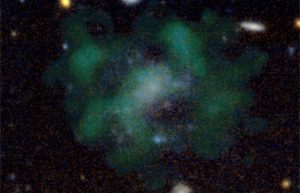I’m usually quite cynical when I speak about humankind, but last month’s headlines were straight out of some utopian science fiction work: humankind has touched the Sun, water was found underground in Mars, for the first time more energy was produced than consumed in a nuclear fusion reaction, and a (second) galaxy was found without any dark matter. Yes, I know that almost nobody cared about these ground-breaking news, which promptly returns us to dystopia.

Parker Solar Probe was launched by NASA in ’18 and in last April it first reached the point of contact with corona, the sun’s outer layer, as recent analysis confirmed. It is still going further in and will continue doing so for four more years.
Although it’s already beaming back data, obviously a lot more are expected in the next years; but the psychological significance of what it did back in April can’t be ignored.

The ExoMars Trace Gas Orbiter has been in orbit around Mars since ’16, sent out by the European Space Agency and the russian Roscosmos agency. Among other things, it now found that a large quantity of ice must be lying just underneath the martian surface in Valles Marineris, which is the largest canyon of the solar system.
It found this thanks to the cosmic rays that strike the planet and make the soil release neutrons, which the satellite then observes. Wetter soil gives off less neutrons and stands out easily in the observations. It’s not entirely clear yet that said water under the ground is in the form of ice, but this seems like the most probable case.

You’ve most probably heard already about the holy grail of energy production that will provide us with endless energy supplies almost for free and with no environmentable impact: nuclear fusion. By the way, this is all true. The only little problem is that fusion seems to be vastly away from our technological reach.
However, it’s not that we’re not trying. Admittedly, the last decades have seen much progress in the jigsaw pieces that might bring about fusion one day. And to clarify, it can already be achieved in small scales, but it is so so costly that doesn’t make any sense as a mechanism of energy production.
One very small but also significant step -and the most significant ever so far- on the way to affordable fusion happened last August. The National Ignition Facility at the Lawrence Livermore National Laboratory in California announced now that in one session it managed to produce more energy than the setup consumed. It was only an instant, and it didn’t outdo the total energy consumed on the relevant machinery (just the one spent hitting the target), but still if you’re looking for something to drink to today this can safely be it.

Let’s not pretend, you’ve probably also heard already about dark matter. The mysterious stuff that seems to make up most of galaxies but we can’t find anything about it. Most physicists believe that it is actual matter, a few believe that it’s gravity behaving weirdly, and nobody knows for sure.
Now, astronomers used data from the Very Large Array radio telescopes in New Mexico and found that a small galaxy called AGC 114905 doesn’t seem to have any dark matter (which can be told by the way the galaxy rotates). This is the second such find; the first was another “dwarf” galaxy spotted four years ago.
Now, the existence of such galaxies is a very strong supporter in favour of the theory that dark matter is actual matter. It might sound funny, but if it was only about gravity then every galaxy would behave in the same way. The fact that some don’t, might mean that they lack this actual type of matter, which is strange but could happen.
The saga is far from over and more observations will be needed to confirm that these folks are dark matter-less. But it’s still intriguing, and the more so if one stops and simply realizes what today’s telescopes are capable of doing.
🌒 🌓 🌕 🌗 🌘
Bonus: Although it will be some time before it creates its own news, the succesful launch – after much postponing – of the space telescope James Webb by NASA was a pleasant last event of the year. The telescope will follow Earth from a large distance, it will be protected from sunlight, and it has the potential to significantly surpass its predecessor, the famous Hubble. If you want to learn about what new stuff it will explore, there is this very fine video here:
